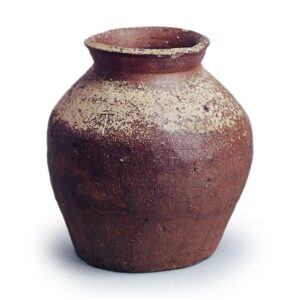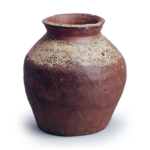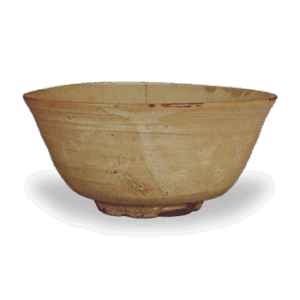
16th century
Height 20.8 cm, mouth diameter 11.6 cm, body diameter 19.4 cm, bottom diameter 14.0 cm
Small jars with a partially bent mouth rim and one side of the mouth were first seen in medieval ceramics in various regions around the end of the 15th century. This type of jar is probably indicative of the spread of oil jars. This small one-necked jar, with a flat rim that seems to have been cut off at an angle at the top of the outer neck, was probably made in the late 16th century. It is made of clay and shaped by cutting, and has a kiln mark on the shoulder. It is well-fired and has a yellowish-brown natural glaze on the shoulder.








